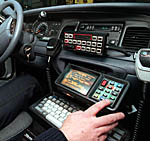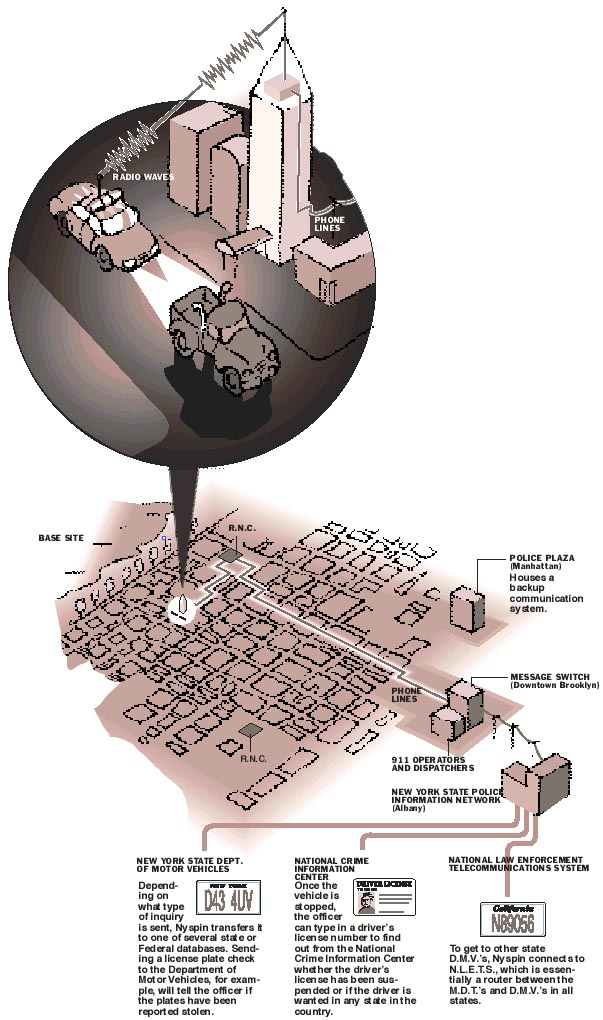January 21, 1999
Computers on Patrol Have Got Your Number
Related ArticleA Well-Equipped Patrol Officer: Gun, Flashlight, Computer By CATHERINE GREENMAN
igital dispatching is changing the way police officers in New York City do their jobs. One of the tools is the mobile data terminal, or M.D.T., which can be used by an officer on patrol to send and receive various types of information.
Mobile Data Terminal

Ruby Washington / The New York Times
All of the M.D.T.’s in New York City’s 2,000 patrol cars are attached to wireless devices that communicate via radio waves with one of 32 strategically located base sites.Public safety officers use M.D.T.’s, small, stationary computers that sit between the driver’s seat and the front passenger seat of police and highway patrol cars, to conduct inquiries about vehicles, drivers and pedestrians. Before M.D.T.’s were introduced to the New York City Police Department in the late 1980’s, officers had to rely on the congested two-way radio system to ask dispatchers for information.
Base Site
Each base site has two frequencies: one for transmitting data and one for receiving. The sites serve as antennas for the M.D.T.’s.Radio Network Controller
Each base site is linked by phone lines to one of four radio network controllers, or R.N.C.’s. As patrol cars drive around the city, the R.N.C.’s make sure that at least one base site is in communication with each M.D.T. The R.N.C.’s also convert the analog signals from the base sites into digital signals and send them via phone lines to a message switch that routes them to the New York State Police Information Network, called Nyspin, in Albany.
Sources: Motorola; N.Y.P.D. Office of Technology and Systems Development